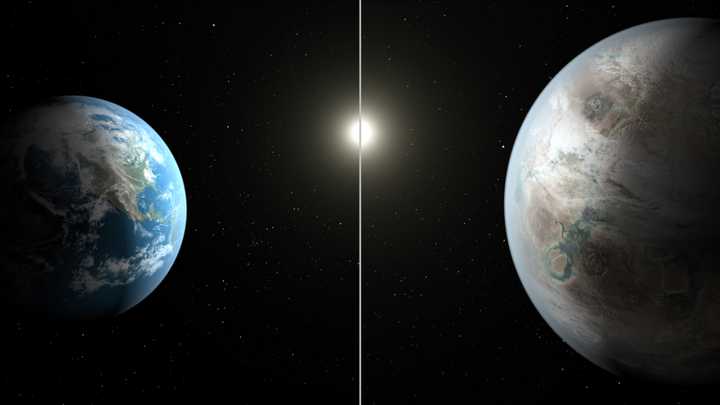The newly names Kepler-452b is the smallest planet ever discovered in the habitable zone, which makes it possible for liquid water pool on the surface of the planet in orbit due to its distance from a G2 type star.
"On the 20th anniversary year of the discovery that proved other suns host planets, the Kepler exoplanet explorer has discovered a planet and star which most closely resemble the Earth and our Sun," said John Grunsfeld, associate administrator of NASA’s Science Mission Directorate at the agency’s headquarters in Washington. “This exciting result brings us one step closer to finding an Earth 2.0."
While this new planet is 60 percent larger than ours, it has a similar orbit of 385 days and is only 5 percent farther from its parent star than we are. The parent star, Kepler-452, is 1.5 billion years older than our sun, has the same temperature and is slightly brighter and larger.
“We can think of Kepler-452b as an older, bigger cousin to Earth, providing an opportunity to understand and reflect upon Earth’s evolving environment," said Jon Jenkins, Kepler data analysis lead at NASA's Ames Research Center in Moffett Field, California, who led the team that discovered Kepler-452b.
"It’s awe-inspiring to consider that this planet has spent 6 billion years in the habitable zone of its star; longer than Earth. That’s substantial opportunity for life to arise, should all the necessary ingredients and conditions for life exist on this planet.”
Click here to follow Daily Voice Fairfield and receive free news updates.
